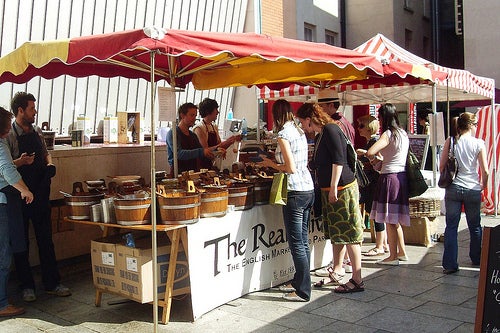
There are times where we think a dish is healthier than the other and we were wrong. Are many myths that revolve around food and above all, misinformation. Sometimes we think that something is healthy (or not) by custom or pre concept, may also be that we let ourselves be carried away by the colors, tags or is in a certain place in the market. Discover the means of determining when a food is healthy and when it is not at all in the following article.
What is healthy and what not?
Before that nothing must bear in mind that our body needs different types of nutrients to be able to develop properly and keep you well, have energy to go to work, play sports, study, etc. Many nutritionists can tell you that all the "mandatory" items come from five major groups: the milk; those who offer no proteins (such as meat, egg or fish); fruits, cereals and vegetables. Fats can not be placed in any group because they do not provide nutrients essential or beneficial.
Each and every one of these five groups are required to be in the daily diet, but in the right amounts. According to the Department of Agriculture of the United States, it is recommended that they dominate vegetable on the plate and desserts, fruits. What you should avoid are all kinds of trans fats, you can find them in products such as cakes, cookies, sugary drinks, savory or pre-cooked foods, etc.
You can get all the nutrients you need with food, not supplements. The healthiest options then are the two previously named and cereals. The proportions are also important. Always choose natural products to packaging, meat or chicken, shelves already made as patties foods. The pace of life and the obligations they can not leave you too long for healthy cooking, and if you usually buy made food, healthier than the pizza options you can find for example.

8 Tips to determine whether or not a food is healthy
- First, it pays much attention to the number of calories per serving that has. This what you can read on the label of the package at the time of purchase. It is also good to know how many more of those calories come from fats less healthy is the food. For a 2,000 calorie daily diet, you should consume a maximum 65 grams of fat.
- Take a look at the type of fat that contains the product, always avoiding trans fats and also saturated. He is not recommended to consume more than 2 grams of trans fats per day, for a diet of 2,000 calories, according to the American Heart Association.

- Avoid excess sodium (salt) and cholesterol in foods. This means, fried foods or snacks are not healthy. A teaspoon of salt per day is advisable, even if no one meets it.
- It confirms that the products are vitamins, fiber, iron and calcium. They are considered rich in these nutrients that provide 20% at least of the recommended values. Do not have to have all of these together, but if one or two predominantly.
- Read if the food contains added sugar . Keep in mind that those who do so do not express it on the label. It can be named in different ways: corn syrup high fructose, dextrose, maltose, sucrose, honey, fruit juice concentrate, maple syrup or fructose.
- The order in which appear the ingredients on the label is in relation to their amount. He first read in the list will be the most abundant, the second which followed and so on. If the ranking "top" include salt, fat or sugar, choose another.

- If you're into the idea of buying organic products, learn well to read labels and packaging, because there can be some deception.
- For you to consume or buy prepared food, pay attention to how you cook, i.e., the type of cooking. It's choosing the roast or the baking and prevents the fried.
Additional recommendations
- Do not be fooled by green labels or those that contain images of fruit, because it doesn't mean that they are healthy. In many cases, its ingredients are as or more harmful than the "regular" version (not light) of that product.
- Be careful with the amount of genetically engineered foods that are sold in the markets. If on the label all the names of the ingredients are impossible to read, is because it is a product based on chemicals, dyes, preservatives, etc. The same if you have numbers or letters next to each ingredient.
- Pay attention to the children's menus because they are not very healthy, are full of fried foods, fats and sugars. If you go to a restaurant, you prefer to choose the chart half portion of any dish, rather than ordering the "special children", no doubt will be healthier.
- If you have questions about a food or component, it is best that you check with a nutrition expert either, you dismiss buy it.


0 comentarios:
Post a Comment